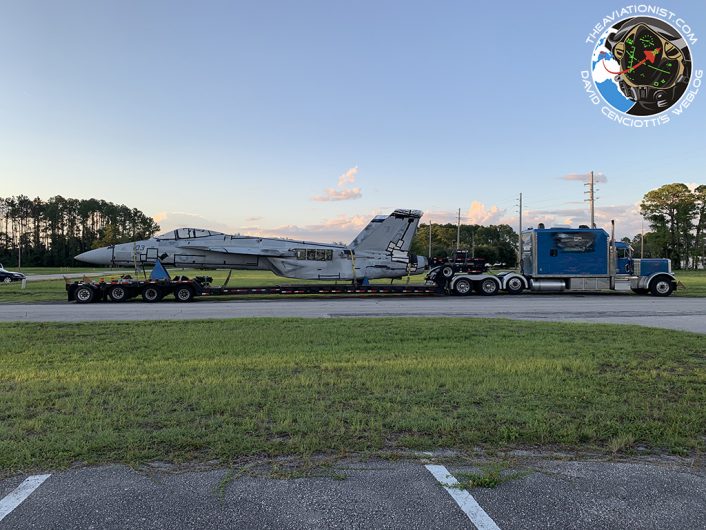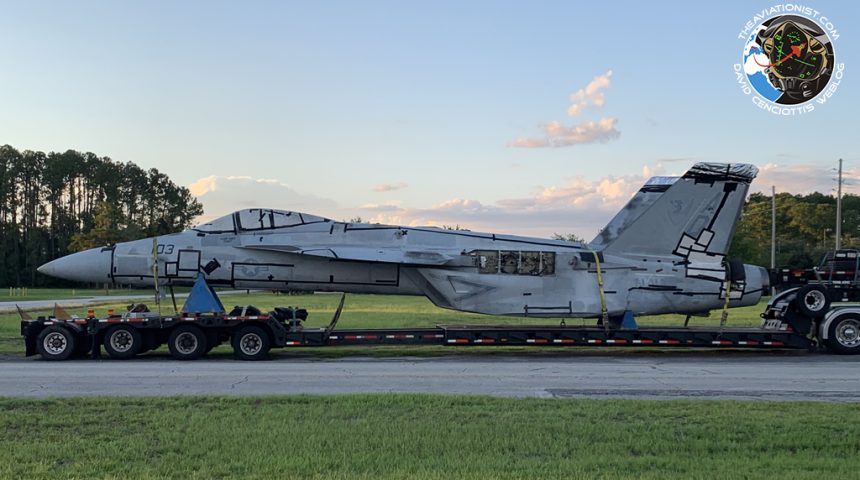Take a look at the status of the jet before it is converted for its new mission with the U.S. Navy Flight Demonstration Squadron.
Few days ago we published the very first photo of one of the “new” F/A-18E Super Hornet jets in the iconic blue and yellow livery of the Blue Angels. The team is in fact preparing its transition from the current Boeing F/A-18C and D model aircraft to the larger and more capable Boeing F/A-18E and F Super Hornets. According to the plan 2020 should be the last season with the existing “Legacy” Hornets, some of those are the oldest Hornets in USN service, with their service life expiring during the 2021.
As already reported, the Blue Angels should receive as many as 18 Super Hornets including two F/A-18F two-seat jets. All these jets belong to the early Low-Rate Initial Production (LRIP) Super Hornet runs: just like their predecessors, they are among the oldest Super Hornets in the fleet and they need extensive works, including software upgrade, the removal of the M61A2 cannon, the installation of the smoke generation systems. The team will also change some of its maneuvers so as to reduce aircraft fatigue: “Reducing aircraft fatigue is the key to getting the maximum utility out of each airframe converted to the Blue Angels configuration,” said Capt. Ryan Bernacchi, former Blue Angels Commanding Officer and flight leader, and director of CNATRA’s Blue Angels Transition Team during 2018, in a Naval Aviation News article published last year.
“A multi-month collaborative study with NAVAIR engineers has allowed the transition team to understand where the current demonstration puts the most strain on the airframes and has helped them develop ways to reduce the strain while preserving the visual appeal of specific maneuvers. The net effect has been dramatic reduction in overall “stress” put on the airframes in the six pilot positions and is expected to allow the Navy to fly each airframe up to or possibly even beyond the 6,000 flight-hour design specification, Bernacchi said.”
The U.S. Navy has identified 18 initial LRIP jets, primarily used as trainers and test aircraft and were not intended or equipped for conflict and have not been deployed. Among them, two of the “hero jets” used in the filming of “Top Gun: Maverick” the sequel of the famous 1980s action movie with Tom Cruise, and also the BuNo 165535, the third production Super Hornet. The aircraft was spotted on a trailer as it was delivered to the Fleet Resource Center South East (FRCSE) in Jacksonville Florida, where it will be modified and prepared to fly with the Blue Angels.

BuNo 16535 still sports the markings and modex (AD-103) used when the aircraft was assigned to VFA-106 at NAS Oceana, Virginia.
The overall cost for modifying the jet includes 24M USD for non-recurring engineering (NRE) work to design and incorporate a “kit” of all the necessary components such as the smoke system into the aircraft, 17M USD for the kit procurement and 2.7M USD per aircraft for the kit installation and paint.









